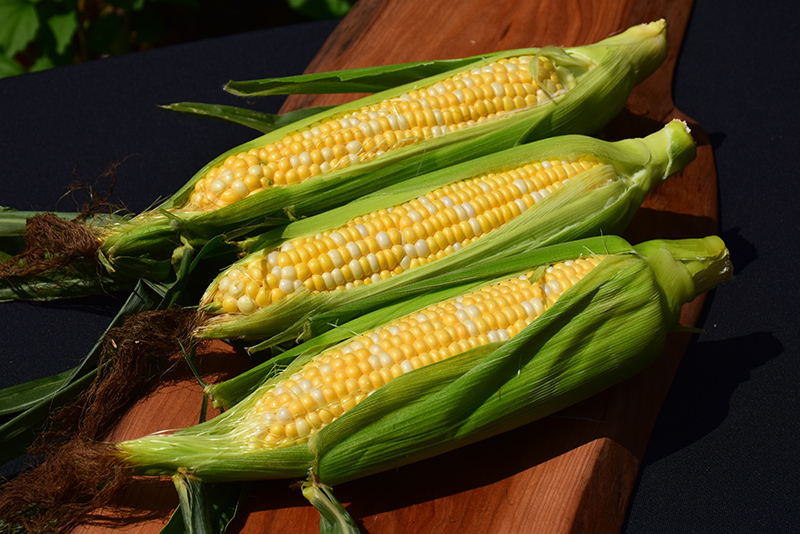Height: 6 feet
Spacing: 12 inches
Sunlight:
![]()
Hardiness Zone: (annual)
Group/Class: SE-Sugar Enhanced
Description:
A beautiful variety that produces checkerboard kernels of creamy white and yellow on 8" long cobs; a fast growing and early maturing choice, producing an abundance of ears; sweet and tender kernels, great for freezing, canning or eating right off the cob
Edible Qualities
Ambrosia Corn is an annual vegetable plant that is typically grown for its edible qualities, although it does have ornamental merits as well. It produces cobs of creamy white long kernels with yellow variegation which are harvested from mid summer to early fall. The kernels have a sweet taste and a crisp texture.
The kernels are most often used in the following ways:
- Eating When Cooked/Prepared
- Cooking
- Canning
- Freezing
Planting & Growing
Ambrosia Corn will grow to be about 6 feet tall at maturity, with a spread of 12 inches. When planted in rows, individual plants should be spaced approximately 12 inches apart. This fast-growing vegetable plant is an annual, which means that it will grow for one season in your garden and then die after producing a crop. Because of its relatively short time to maturity, it lends itself to a series of successive plantings each staggered by a week or two; this will prolong the effective harvest period.
This plant can be integrated into a landscape or flower garden by creative gardeners, but is usually grown in a designated vegetable garden. It should only be grown in full sunlight. It does best in average to evenly moist conditions, but will not tolerate standing water. It may require supplemental watering during periods of drought or extended heat. This plant should not require much in the way of fertilizing once established, although it may appreciate a shot of general-purpose fertilizer from time to time early in the growing season. It is not particular as to soil pH, but grows best in rich soils. It is somewhat tolerant of urban pollution. This is a selected variety of a species not originally from North America.

